The admissions process is the heartbeat of every higher education institution. It dictates enrollment numbers, impacts institutional revenue, and directly influences the student experience. Yet, many colleges and universities continue to struggle with inefficient admissions processes that drain resources, frustrate prospective students, and ultimately harm their bottom line.
While institutions recognize the importance of attracting and enrolling students, they often overlook the hidden costs of inefficiencies in their admissions workflows. Whether it’s slow response times, inconsistent student experiences, lack of integration between systems, or manual processes, these inefficiencies can lead to a poor student experience, decreased admissions productivity and ultimately fewer students in your school.
In this article, we’ll break down the true cost of admissions inefficiencies and explore how modern and higher-education CRM solutions, like Ynot?, can transform the admissions process and drive institutional success.
1. The Financial Toll of Inefficiencies
One of the most significant costs of an inefficient admissions process is lost revenue. Every prospective student who inquires about a program is a potential tuition-paying enrollee. When institutions fail to respond promptly, provide clear guidance, or nurture leads effectively, they risk losing these prospects to competitors.
Key financial losses due to inefficiencies include:
- Missed Enrollment Opportunities: A slow or disorganized admissions process means that prospective students may abandon their applications or choose a competing institution with a more seamless experience.
- High Cost per Acquisition: When marketing and recruitment efforts fail to convert inquiries into enrollments, institutions waste budget dollars on ineffective campaigns.
- Inefficient Use of Staff Time: Admissions teams bogged down by manual data entry or disjointed communication channels spend time on administrative tasks instead of engaging with students.
A streamlined admissions process, supported by automation and real-time tracking, can help institutions maximize their return on investment (ROI) and drive sustainable growth.
2. Student Experience and Institutional Reputation
Today’s students expect seamless digital experiences, fast responses, and personalized communication. A slow or outdated admissions process not only frustrates prospective students but also damages the institution’s reputation.
Common inefficiencies that impact student experience include:
- Long Response Times: Prospective students want quick answers. If an institution takes days or even hours to respond to inquiries, students are likely to move on.
- Lack of Personalization: Generic, one-size-fits-all communication can make applicants feel like just another number rather than a valued future student.
- Complex Application Processes: A confusing, time-consuming application process increases dropout rates and deters students from completing their enrollment.
By leveraging an admissions-specific CRM like Ynot? institutions can deliver automated responses, real-time updates, and create a personalized admissions journey that fosters engagement and trust.
3. Data Silos and Poor Decision-Making
Many institutions still rely on fragmented systems where marketing departments, admissions teams, and academic offices operate in silos. Without centralized data, decision-makers lack the integrated insights needed to optimize recruitment strategies and forecast enrollment trends.
The impact of data silos includes:
- Inconsistent Communication: When different departments lack access to unified student records, applicants may receive conflicting messages.
- Inability to Track Prospects: Without a single source of truth, institutions struggle to identify which leads are most likely to enroll.
- Delayed Reporting & Forecasting: Real-time analytics are crucial for admissions teams to adjust recruitment efforts on the fly. When data is scattered, institutions miss key opportunities for improvement.
A fully integrated CRM solution like Ynot? consolidates all admissions and marketing data into a single, easily accessible platform, enabling institutions to make data-driven decisions with confidence.
4. Compliance and Security Risks
Higher education institutions handle vast amounts of sensitive student data, including personal information, transcripts, and financial details. Inefficient admissions processes—especially those reliant on paper-based records or unsecured spreadsheets—pose serious compliance and security risks, particularly regarding telemarketing regulations.
Potential risks of outdated admissions processes:
- TCPA & DNC Violations: The Telephone Consumer Protection Act (TCPA) and Do Not Call (DNC) regulations impose strict guidelines on contacting prospective students via phone and text. Institutions using outdated methods risk non-compliance, leading to costly fines and legal issues.
- Data Breaches: Poor security protocols can lead to unauthorized access to student records, putting sensitive information at risk.
- Regulatory Non-Compliance: Institutions must adhere to federal and state regulations regarding student data privacy. Failure to comply can result in hefty fines and reputational damage.
- Manual Errors: Human errors in data entry or application processing can lead to misplaced records, lost documentation, or incorrect admissions decisions.
A secure, cloud-based CRM like Ynot? ensures compliance with industry regulations, offers encrypted data storage, and provides built-in TCPA and DNC safeguards to protect institutions from compliance risks.
Conclusion: It’s Time to Say Ynot
The cost of admissions process inefficiencies is far greater than most institutions realize. From lost revenue and student attrition to security risks, inefficient workflows can severely impact an institution’s success.
By implementing a higher education-specific admissions CRM like Ynot?, institutions can streamline processes, improve student engagement, and enhance operational efficiency. It’s time to move beyond outdated methods and embrace technology that drives enrollment success.
So, the question isn’t why change?—it’s Ynot?




